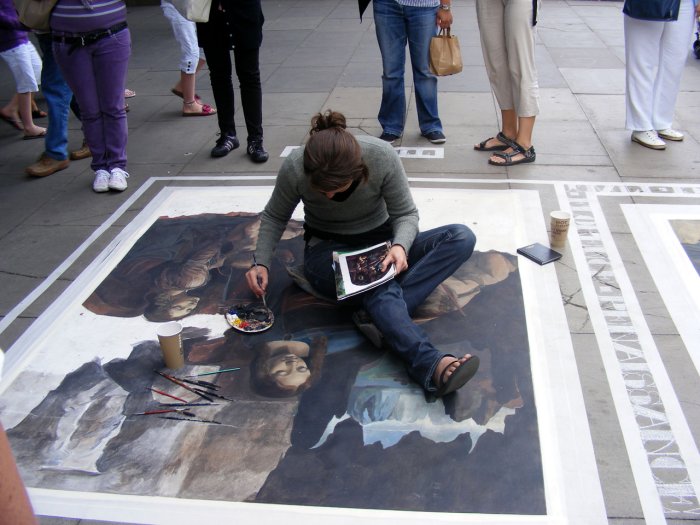Artists And Architects See The World Differently Compared To Other People
Artists and architects see the world differently compared to other people.
A study shows that when for example painters discuss places they describe the depicted space as a two-dimensional image, while architects focus more on paths and the boundaries of the space.

For the study, researchers brought in 16 people from each of the three professions – they all had at least eight years of experience and included Sir Anthony Gormley – alongside 16 participants without any relevant background, who acted as controls.
The participants were presented with a Google Street View image, a painting of St. Peter’s Basilica, and a computer-generated surreal scene. They had to describe the environment, explain how they would explore the space, and suggest changes to the environment in the image.
“We found that painters, sculptors and architects consistently showed signs of their profession when talking about the spaces we showed them, and all three groups had more elaborate, detailed descriptions than people in unrelated professions,” said senior author Dr Hugo Spiers (UCL Psychology & Language Sciences).
The painters tended to shift between describing the scene as a 3D space or as a 2D image. Architects were more likely to describe barriers and boundaries of the space, and used more dynamic terms, while sculptors’ responses were between the two.
Painters and architects also differed in how they described the furthest point of the space, as painters called it the ‘back’ and architects called it the ‘end.’
The control participants gave less elaborate responses, which the authors say went beyond just a lack of expert terminology.
“Our study has provided evidence that your career may well change the way you think. There’s already extensive research into how culture changes cognition, but here we’ve found that even within the same culture, people of different professions differ in how they appreciate the world,” said Dr Spiers.
“Our findings also raise the possibility that people who are already inclined to see the world as a 2D image, or who focus on the borders of a space, may be more inclined to pursue painting or architecture,” he said.



 Creators of mankind
Creators of mankind Description of “Tall white aliens”
Description of “Tall white aliens” Where they came from?
Where they came from? About hostile civilizations
About hostile civilizations The war for the Earth
The war for the Earth “Tall white aliens” about eternal life
“Tall white aliens” about eternal life Video: “Nordic aliens”
Video: “Nordic aliens” Aliens
Aliens Alien encounters
Alien encounters The aliens base
The aliens base UFO
UFO Technology UFO
Technology UFO Underground civilization
Underground civilization Ancient alien artifacts
Ancient alien artifacts Military and UFO
Military and UFO Mysteries and hypotheses
Mysteries and hypotheses Scientific facts
Scientific facts


















